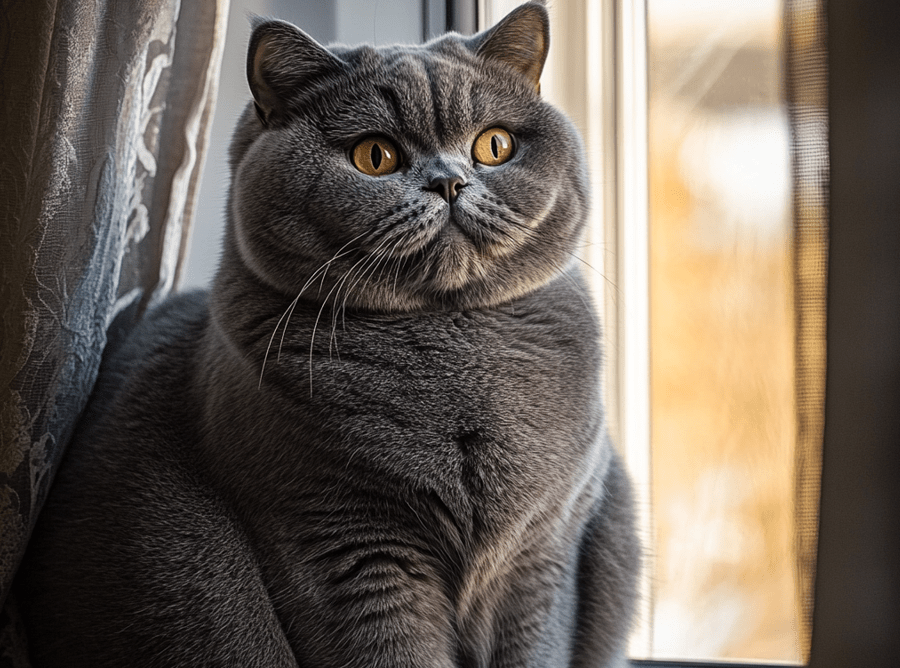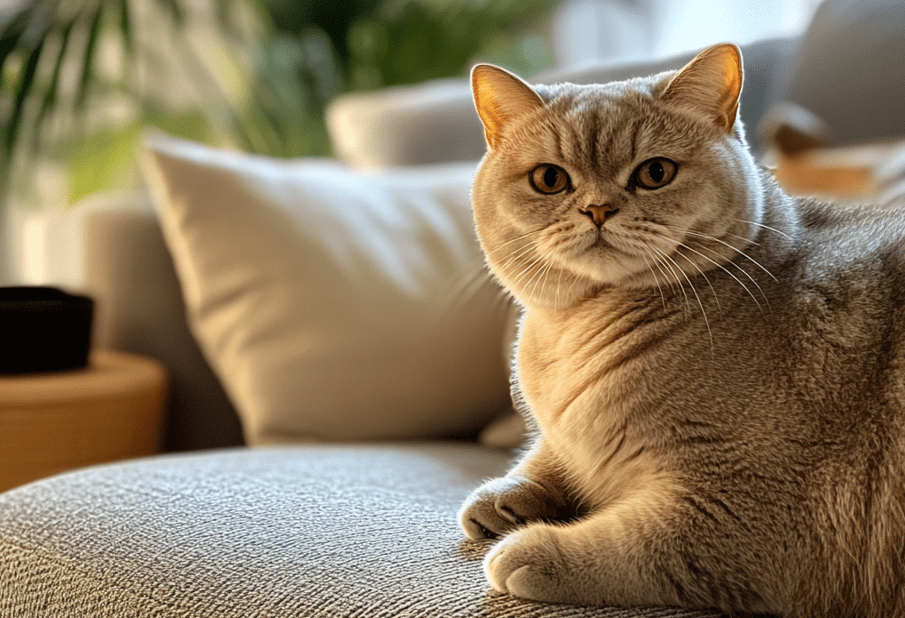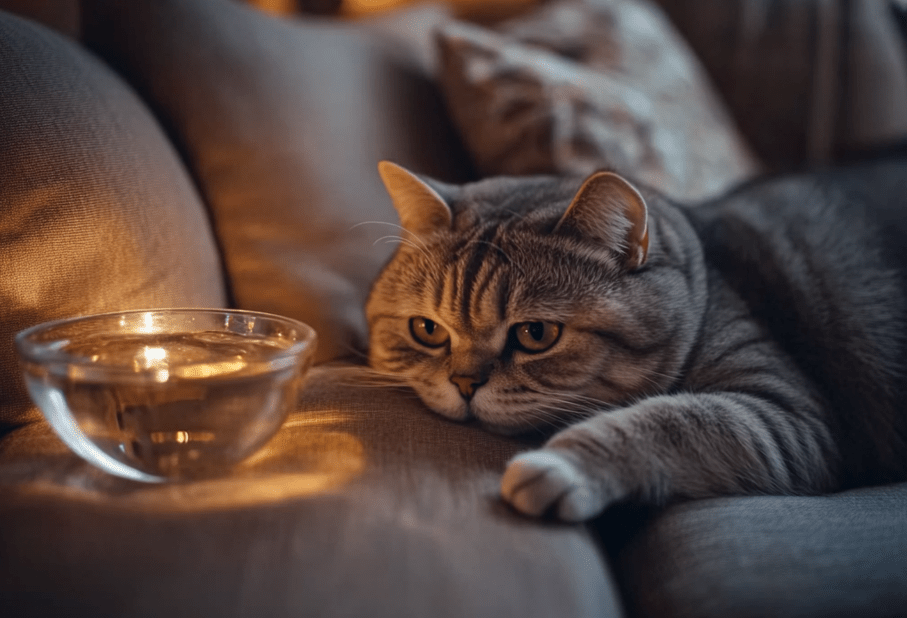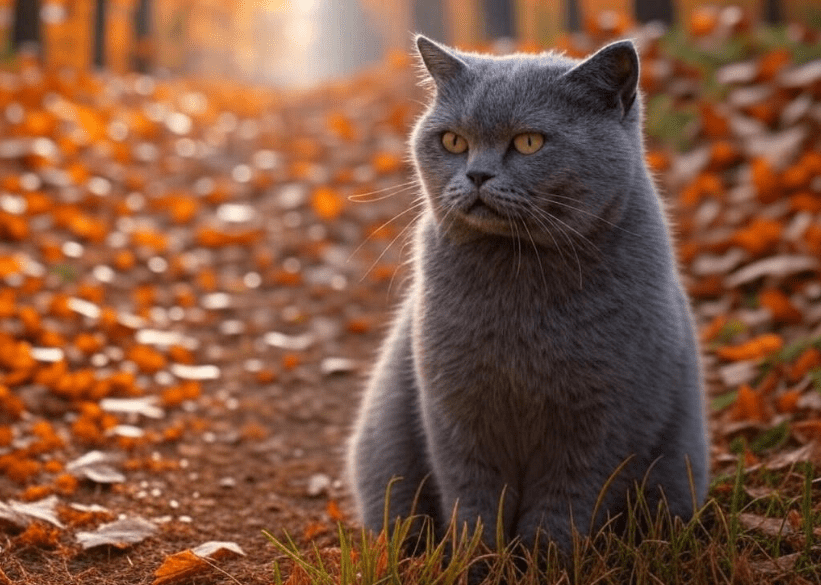
British Shorthair grooming can be a challenging task for many cat owners. These adorable, plush-coated felines are known for their round faces, big eyes, and calm demeanor, but when it comes to grooming, they often put up a fight. If your British Shorthair hisses, squirms, or bolts at the sight of a brush, you’re not alone. This comprehensive guide explores why British Shorthairs hate grooming and offers practical, actionable tips to make the process easier for both you and your furry friend. From understanding their behavior to choosing the right tools and techniques, we’ll cover everything you need to know to keep your cat’s coat healthy and shiny.
Why Do British Shorthairs Dislike Grooming?
British Shorthairs have a dense, plush coat that requires regular grooming to prevent matting, hairballs, and skin issues. However, many of these cats seem to have an aversion to being brushed or bathed. Let’s dive into the reasons behind their dislike for grooming.
1. Sensitivity to Touch
British Shorthairs have a thick double coat, which can make their skin more sensitive to brushing or handling. The sensation of a brush pulling through their fur, especially if there are tangles or mats, can be uncomfortable or even painful. Cats are naturally sensitive to touch, and British Shorthairs may perceive grooming as an invasion of their personal space.
2. Lack of Early Grooming Exposure
Cats that aren’t accustomed to grooming from a young age are more likely to resist it as adults. If your British Shorthair wasn’t handled frequently or introduced to brushes and baths as a kitten, they may associate grooming with stress or fear.
3. Negative Grooming Experiences
A single bad grooming session—such as accidentally pulling their fur, using a harsh brush, or forcing them into a bath—can create a lasting negative association. British Shorthairs have excellent memories and may hold a grudge against grooming tools or routines.
4. Independent Nature
British Shorthairs are known for their independent and somewhat aloof personalities. They prefer to be in control of their environment and may resist grooming because it feels like they’re being restrained or manipulated.
5. Health Issues
Sometimes, a British Shorthair’s aversion to grooming can signal an underlying health problem. Skin conditions, allergies, or pain from arthritis or injuries can make grooming uncomfortable. If your cat suddenly starts hating grooming, it’s worth consulting a veterinarian to rule out medical issues.
The Importance of British Shorthair Grooming
Before we explore how to make grooming easier, let’s discuss why it’s essential for your British Shorthair’s health and well-being.

Prevents Matting and Hairballs: The dense coat of a British Shorthair is prone to matting, which can lead to skin irritation and infections. Regular grooming also reduces the amount of loose fur your cat ingests, minimizing hairballs.
Promotes Healthy Skin and Coat: Brushing distributes natural oils, keeping the coat shiny and the skin hydrated.
Strengthens Your Bond: With the right approach, grooming can become a bonding experience that builds trust between you and your cat.
Early Detection of Health Issues: Grooming sessions allow you to check for fleas, ticks, lumps, or skin abnormalities that might otherwise go unnoticed.
How to Make British Shorthair Grooming Easier
Transforming grooming from a battle into a pleasant routine takes patience, understanding, and the right strategies. Here are proven tips to make British Shorthair grooming stress-free.
1. Start Grooming Early
If you have a British Shorthair kitten, introduce grooming as part of their routine from a young age. Handle their paws, ears, and fur gently to get them used to being touched. Use a soft brush and reward them with treats to create positive associations.
Tip: Even if your cat is an adult, it’s never too late to start. Begin with short, gentle sessions and gradually increase the duration as they become more comfortable.
2. Choose the Right Grooming Tools
The tools you use can make or break your grooming experience. Here’s a list of must-have grooming tools for British Shorthairs:
Slicker Brush: Ideal for removing loose fur and preventing mats. Look for one with soft, rounded pins to avoid scratching the skin.
Wide-Tooth Comb: Great for detangling and working through mats without pulling the fur.
Deshedding Tool: Helps manage shedding, especially during spring and fall when British Shorthairs shed more heavily.
Nail Clippers: Use cat-specific clippers to trim nails safely.
Grooming Gloves: These are perfect for cats that dislike brushes, as they mimic petting while removing loose fur.
Tip: Avoid cheap or harsh brushes that can irritate your cat’s skin. Invest in high-quality tools designed for short-haired breeds.
3. Create a Calm Environment
British Shorthairs are sensitive to their surroundings, so set the stage for a relaxed grooming session:
-
Choose a quiet, familiar space free from loud noises or distractions.
-
Groom when your cat is naturally calm, such as after a meal or nap.
-
Use a non-slip mat or towel to make your cat feel secure.
-
Play soothing music or use a pheromone diffuser to reduce anxiety.
4. Use Positive Reinforcement
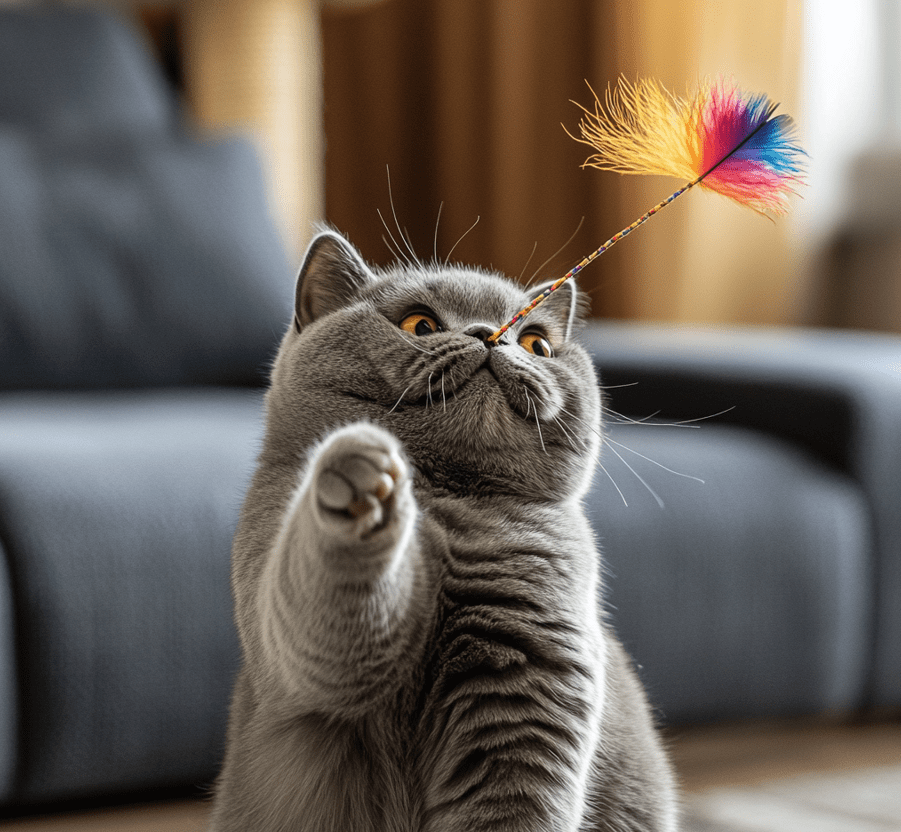
Positive reinforcement is key to making grooming enjoyable. Reward your British Shorthair with treats, praise, or playtime during and after grooming. Start with short sessions (1–2 minutes) and gradually increase the time as they get used to the process.
Example: Brush your cat for a few strokes, then offer a treat. Repeat this cycle to build a positive association.
5. Break Grooming into Small Steps
If your British Shorthair hates grooming, break the process into manageable steps to avoid overwhelming them:
Day 1: Let your cat sniff and explore the grooming tools without using them.
Day 2: Gently touch the brush to their fur for a few seconds, then reward them.
Day 3: Brush lightly for a minute, focusing on areas they enjoy, like their back.
Day 4 and Beyond: Gradually increase the brushing time and introduce other tasks like nail trimming or ear cleaning.
6. Master the Art of Brushing
Brushing is the cornerstone of British Shorthair grooming. Follow these steps for a successful brushing session:
-
Start with a wide-tooth comb to detangle any mats gently.
-
Use a slicker brush in the direction of hair growth to remove loose fur.
-
Focus on high-shedding areas like the back, sides, and tail.
-
Be gentle around sensitive areas like the belly and legs.
-
Brush 2–3 times a week for 5–10 minutes to keep the coat in top condition.
Pro Tip: If your cat has mats, don’t yank them out. Use a mat splitter or consult a professional groomer to avoid causing pain.
7. Make Bathing Less Stressful
While British Shorthairs don’t need frequent baths, an occasional bath can help keep their coat clean and reduce allergens. Here’s how to make bathing easier:
-
Use a cat-specific shampoo that’s gentle on their skin.
-
Place a rubber mat in the sink or tub to prevent slipping.
-
Fill the tub with a few inches of lukewarm water before bringing your cat in.
-
Use a handheld sprayer or cup to wet and rinse their fur, avoiding the face.
-
Keep the session short and reward them afterward.
Frequency: Bathe your British Shorthair every 2–3 months or as needed (e.g., if they get dirty).
8. Address Nail Trimming with Care
Trimming your British Shorthair’s nails prevents scratching and keeps their paws healthy. Here’s how to do it safely:
-
Use cat-specific nail clippers and trim only the sharp tips.
-
Press gently on the paw to extend the claws.
-
Avoid the pink “quick” (the blood vessel inside the nail) to prevent pain or bleeding.
-
Trim nails every 2–3 weeks.
Tip: If your cat resists, wrap them in a towel or enlist a helper to hold them gently.
9. Clean Ears and Eyes
British Shorthairs are prone to earwax buildup and tear staining. Include these tasks in your grooming routine:
Ears: Use a vet-approved ear cleaner and a cotton ball to wipe the outer ear. Never insert anything into the ear canal.
Eyes: Wipe away tear stains with a damp, soft cloth or vet-recommended eye wipes.
Frequency: Check and clean ears and eyes weekly.
10. Know When to Seek Professional Help
If your British Shorthair’s grooming needs are too challenging—due to severe matting, extreme resistance, or health issues—consider hiring a professional groomer. Look for a groomer experienced with cats and familiar with the British Shorthair breed.
Signs You Need a Pro:
-
Mats that can’t be safely removed at home.
-
Persistent skin issues or fleas.
-
Extreme stress or aggression during grooming.
Common Grooming Mistakes to Avoid
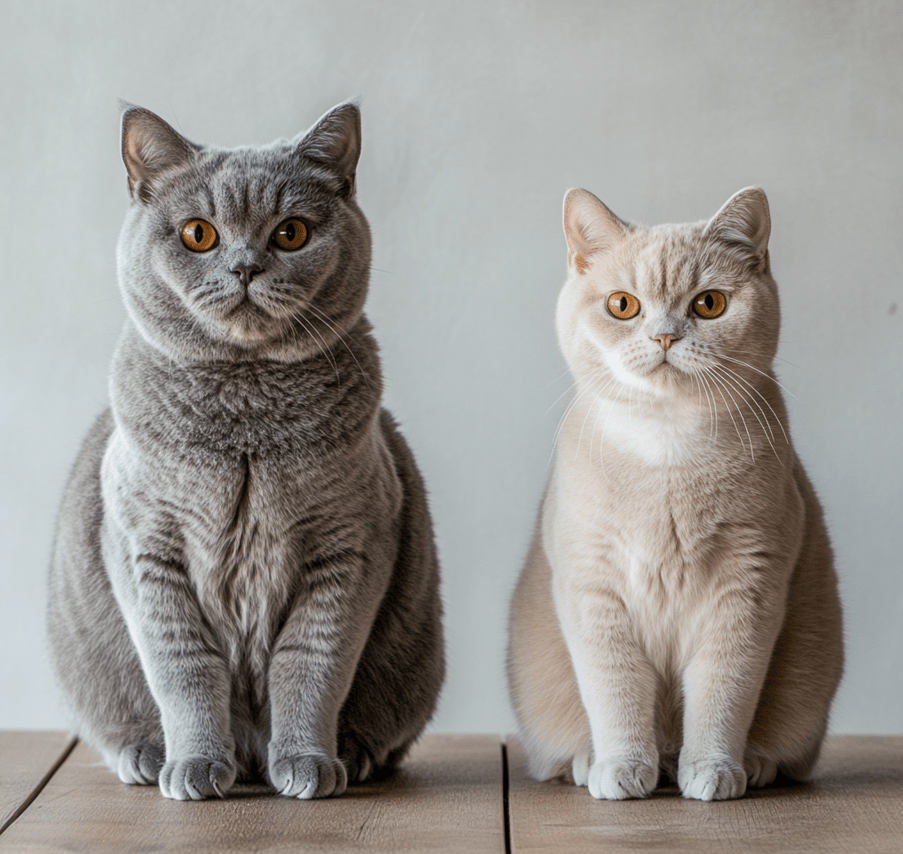
Even with the best intentions, cat owners can make grooming mistakes that stress their British Shorthair. Here’s what to avoid:
Forcing Grooming: Never restrain or force your cat into grooming, as this can worsen their fear.
Using Human Products: Human shampoos and brushes can irritate your cat’s skin or damage their coat.
Ignoring Mats: Untreated mats can lead to skin infections or require shaving.
Skipping Regular Grooming: Infrequent grooming leads to matting, hairballs, and poor coat health.
Rushing the Process: Take your time to ensure grooming is a positive experience.
How Often Should You Groom Your British Shorthair?
The grooming frequency depends on your cat’s coat, shedding patterns, and lifestyle. Here’s a general guideline:
Brushing: 2–3 times per week (daily during shedding seasons).
Bathing: Every 2–3 months or as needed.
Nail Trimming: Every 2–3 weeks.
Ear and Eye Cleaning: Weekly.
Dental Care: Brush teeth 2–3 times per week with a vet-approved toothpaste.
Note: Indoor British Shorthairs may need less frequent bathing than outdoor cats, but brushing remains essential year-round.
Troubleshooting British Shorthair Grooming Challenges
If you’re still struggling with grooming, here are solutions to common problems:
Cat Runs Away: Start with grooming gloves to mimic petting, and gradually introduce a brush.
Cat Hisses or Scratches: Take a break and try again later. Use treats to reward calm behavior.
Excessive Shedding: Increase brushing frequency and consider a deshedding tool. Check with a vet for dietary or health issues.
Matted Fur: Use a mat splitter or consult a groomer for severe mats.
Building a Long-Term Grooming Routine
Consistency is the key to successful British Shorthair grooming. Create a grooming schedule that fits your lifestyle and your cat’s needs. Over time, your cat will become more comfortable with the process, and grooming will feel like a natural part of your routine.
Sample Weekly Grooming Schedule:
Monday: Brush for 5–10 minutes, check ears and eyes.
Wednesday: Brush and trim nails.
Friday: Brush and clean tear stains.
Sunday: Full grooming session (brush, check ears/eyes, optional bath).
Conclusion

British Shorthair grooming doesn’t have to be a struggle. By understanding why your cat resists grooming and using the right tools, techniques, and positive reinforcement, you can turn grooming into a stress-free, bonding experience. Start slowly, be patient, and prioritize your cat’s comfort at every step. With consistent effort, your British Shorthair’s coat will stay healthy, shiny, and mat-free, and you’ll both enjoy the process.
If you’re still facing challenges, don’t hesitate to consult a veterinarian or professional groomer for personalized advice. With the tips in this guide, you’re well-equipped to make British Shorthair grooming a breeze.

